Autumn crocuses: types and features of cultivation

Every gardener wants to have a garden that does not fade with the arrival of autumn, but remains as bright and lush. Autumn crocuses make these dreams come true - these flowering plants have incredibly bright and delicate inflorescences that begin to bloom in early autumn. In this article, you will get acquainted with the popular varieties of autumn crocuses, as well as with the peculiarities of growing these unique plants.


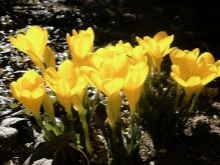
General characteristics
Autumn crocuses or autumn flowering saffron are low-growing garden plants, which are distinguished by cupped or goblet buds of lemon, purple or cobalt color.
Autumn saffron differs from classic spring crocuses only in the flowering period, which can last from late August to November.

Overview of species and best varieties
Gardeners distinguish about 10 separate varieties of autumn-flowering crocuses, which differ from each other in the shape of the flowers, height, and also the color of the buds. Below you will find the most popular varieties of these crocuses.
- Beautiful. This variety belongs to the earliest autumn crocuses - the flowering period for these plants begins in the very first days of autumn. It is characterized by large goblet-shaped flowers that can be white, cobalt or lilac in color.

- "Zonatus". The flowering period of this culture falls in mid-September or early October. The large flowers of the plant (up to 4 cm in length) are cast in a delicate pink tint and have a characteristic yellowish core. In addition, these plants have a faint sweet odor.

- Pale ocher. It differs from other varieties in miniature light buds with very narrow petals. In addition, the buds of the plant have a rich yellow center.

- Long-flowered. This type of autumn saffron blooms later than anyone else - in early to mid-November.
This species has no restrictions on color, but it has an elongated bud shape.

- Crocus Sharoyan. This type, perhaps more often than others, can be found in the design of landscape designs for summer cottages. These plants have a rich lemon-yellow color that stands out strongly against the background of the flower beds. The flower consists of rounded petals, and its flowering period occurs in mid-September (sometimes later).


- Zephyr. This undersized variety of autumn saffron has small, goblet buds of delicate lavender and pinkish color. White flowers with a pinkish tint are often found.


- Sowing. This tall crocus variety is actively grown for its unique stigmas, which are today used as a spice. Sown saffron can grow up to 30 cm in height and has large purple flowers with reddish stigmas that give off a very strong aroma.

- Kholmovoy. It is one of the shortest varieties of saffron. These plants do not reach a height of more than 12 cm and are distinguished by white buds with bright purple stripes on the petals.

- Crocus Pallas. A common variety of autumn-flowering crocus - the flowering period begins in September, and the plant itself has large light purple buds up to 5 cm in diameter.
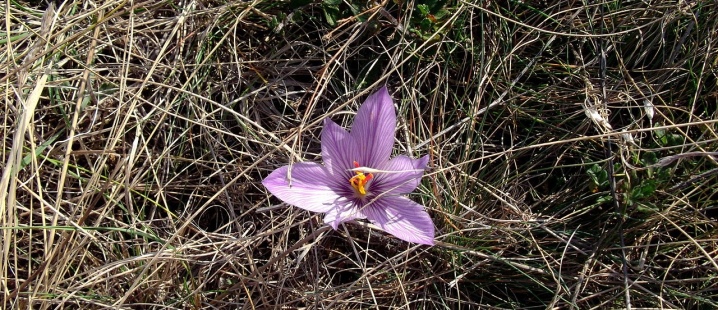
- Banatsky. This is one of the tallest varieties of autumn saffron - up to 30 cm in height.A distinctive feature of the species is 2 rows of petals. The first row consists of 3 large open petals of lilac color, the second - of pinkish small petals surrounding the stigma.


Boarding and transfer rules
Crocuses do not need specific care, but planting such plants should be taken very responsibly. All planting procedures for autumn saffron can be roughly divided into 2 phases:
- choosing a suitable place;
- planting a flower.
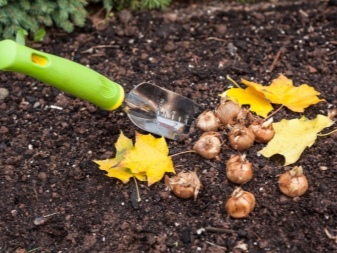

Seat selection
In many respects, the conditions for the planting site of autumn crocuses will coincide with the conditions for planting of spring varieties, however, it also has its own peculiarities.
- Most varieties of autumn-flowering crocuses adore sunlight, but if there is constant and hot sun on your site, then the plant should be planted in partial shade. Some crocus varieties, such as Sharoyan, need regular shade for abundant flowering, so it is better to plant them near large trees or shrubs.
- When looking for a place for autumn saffron, you should immediately abandon the windy areas with a lot of drafts and cold winds. It is best to choose a location where the plant is protected from the windy side by other crops, a fence or an extension.
- Avoid planting saffron in lowlands and places where moisture accumulates during spring floods. The bulbs of autumn crocuses are very susceptible to rotting, so it is wiser to plant this garden crop on small hills or form small raised earthen beds (for example, an alpine slide). A universal option would be to install high-quality drainage in the crocus hole.
- Autumn crocuses differ in individual preferences for the type of soil on the site for their planting. Best of all, they get along on light sandy loam or loam, which quickly absorb moisture. If you have a Dutch variety of autumn saffron at your disposal, then these flowers can grow on any type of soil. When the soil on the site is insufficiently nutritious, a few weeks before planting it should be fertilized with mineral or organic fertilizers (compost, ash or humus) and thoroughly dug up. If we talk about the type of soil in terms of the level of acidity and alkalis, then a neutral soil is best suited for saffron.



Landing in open ground
The process of planting autumn saffron is not much different from planting spring crocus varieties. The key points of planting these plants will be indicated below.
- 2 weeks before planting the crocus bulbs in the ground, be sure to feed the flower beds where the flowers will grow.
- The depth of the holes for autumn saffron is not so important, here it is the width that is much more important - over time, the plant acquires a large number of additional shoots and bulbs, which form a massive and dense ball.
- If you are going to actively propagate autumn saffron, then the bulbs should be placed in large polymer pots and put in the ground with them - this will help you safely dig up crocus bulbs in the future to grow new flowers. If saffron is planted in the area just to complement the landscape, then the bulbs are planted without pots.
- Unlike spring crocuses, autumn saffron should always be planted in groups of 5 or more bulbs. During planting, keep a distance of at least 5 cm between fruits. The planting depth should be chosen based on the size of the bulbs and tubers themselves - large bulbs are always planted deeper. Ideally, the planting depth of autumn saffron should be twice the size of the tuber itself. Also, the depth very much depends on the type of soil - for lighter soils, it should be greater (up to 9 cm).
- If we talk about the influence of the depth of planting on the development of the plant itself, then the number of bulbs obtained as a result depends on it.For example, when planting a tuber to a depth of 5 cm in one hole in the future, it will be possible to find up to 10 young tubers.
- To plant autumn saffron in open ground, the bulbs are placed by hand in the dug holes, then sprinkled with soil and lightly compacted. After planting, watering is required.



Transfer
These plants can be transplanted to another location during the spring or in the very first days of autumn (depending on the variety). Transplanting is usually carried out if your crocus bushes consist of many shoots, and there is an obvious overflow of the planting "nest".
To prepare the bulbs for planting, they should be thoroughly dried for 2-3 months in a warm and ventilated area. After drying, dry layers are removed from the bulbs, old roots and scales are removed.
If during this procedure was not without damage, sprinkle all the wounds with wood ash.


Before planting the bulbs, which is carried out in the same way as planting adult tubers, do not forget to check them for rot or empty bulbs. Experienced gardeners advise against transplanting autumn saffron more than once every 3-4 years.
Care features
All varieties of saffron, including the autumn-blooming crocus, differ in simple care requirements, but in order for such flowers to look as bright as possible and bloom as long as possible, it will be useful to follow a number of rules.


Watering
Autumn crocuses, depending on the variety, may need regular and intensive watering, but most varieties still tolerate a long lack of moisture and can feel great in moderately moist soil.
That is why watering autumn saffron is carried out only when the plant's near-stem circle is thoroughly dry.

If you have planted autumn crocuses in a sunny area, and the summer is hot and without rain, then it is recommended to spread a high-quality layer of mulch from needles, sawdust, straw or rotted manure near the flower. If crocuses are planted in a monsoon climate, then a drainage layer is organized in the hole of the plant, and the near-stem circle near the plant is covered with sand to drain moisture.
Usually, crocuses do not need to increase the number of watering during the flowering period, unlike other horticultural crops... If in your region there is a dry spring with little snow in winter, then sometimes watering the crocuses is still worth it - this will help them form healthy bulbs.
Top dressing
If the autumn crocuses planted in open ground do not need special watering, then these garden crops cannot do without fertilizers. Phosphorus and potash fertilizers improve the appearance of the plant's leaves, refresh the color of the buds and prolong the flowering period of saffron. Usually, top dressing is introduced into the soil to increase the number of shoots or during viral or fungal diseases.



It is believed that fertilizing autumn saffron, regardless of the species, is needed only once a year - in early autumn. Small portions of potassium, superphosphate and nitrogen are usually used for feeding (peat should be discarded).
From a large amount of fertilizer, the plant will acquire many green shoots, but the number of buds will remain the same. During the summer and until the very end of flowering, saffron should not be fertilized.
Particularly noteworthy is the feeding of saffron during its transplantation to a new place. In this case, the soil for planting is thoroughly prepared. It is best to choose a mixture of meadow soil, sand or fine gravel as a substrate. This will make the soil lighter and more airy, allowing air and moisture to be absorbed more efficiently into the soil. If depleted soil with a small amount of nutrients is observed at the site of saffron planting, rotted manure is introduced into the soil.


Loosening
Usually, autumn crocuses are planted in summer or late spring, and therefore some conditions for caring for such plants are different. For example, throughout the entire period of active growth and until flowering, the soil in the near-stem circle near the autumn saffron must be regularly loosened. This will not only allow moisture to pass quickly to the plant bulb, but also provide good air permeability.
During the procedure for loosening the soil, try not to touch the bulbs.

Reproduction
It is believed that the fall varieties and crocus species are much easier to propagate than the classic spring saffron. The fact is that in just 1 year these plants are able to form up to 7 independent bulbs, which, after the mother tuber dies off, can begin to grow fully. Usually, the separation of the bulbs is carried out precisely during the transplantation of already mature autumn saffron bushes.
If the transplantation and division of the mother bush into young bulbs are not carried out, then they will begin to bloom no earlier than 3 years after formation. If they are planted in a separate permanent place, you will see flowering in a year.
Usually, this method is chosen for breeding autumn crocuses, since growing with seeds takes a lot of time, and the seedlings usually lose all varietal differences. Besides, it is simply impossible to propagate some varieties of autumn crocuses with the help of seeds.
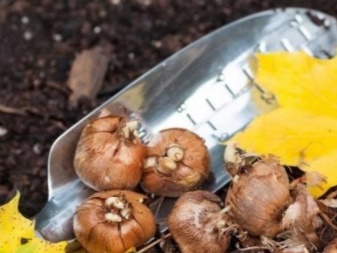

Diseases and pests
Fortunately, autumn crocuses are extremely healthy when it comes to fungal and viral infections. In rare cases, and only in new varieties of autumn saffron, you can find the so-called dry rot... This is an incredibly dangerous disease, as it attacks the saffron bulbs and quickly spreads to neighboring tubers. Unfortunately, such plants cannot be treated - their bulbs must be thrown away or burned immediately.


Carriers of this disease are usually rodents in the form of moles and field mice, who are also not averse to feasting on mouth-watering autumn crocus bulbs. In order to prevent the appearance of such guests on the site, crocuses should be planted away from the flower beds of perennial plants, where rodents usually live. You can get rid of most rodents with the help of special food baits containing poison.
Another potential pest of autumn saffron is butterflies scoopsthat leave large gray caterpillars on the shoots and petals of the plant. You can get rid of them with the help of insecticides or manually removing the caterpillars from the bush.

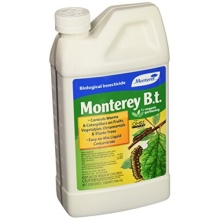

Use in landscape design
Autumn crocuses are a real salvation for gardeners who dream of organizing an ever-flowering garden.
When all the other plants in the summer cottage are already fading, autumn saffron pleases all passers-by with its bright and rich colors.

Due to the fact that autumn crocuses still belong to undersized garden crops, they are usually preferred to be planted on curbs, alpine slides or to create colorful volumetric patterns on flower beds with their help.


Autumn crocuses look especially attractive in autumn against the background of fallen tree leaves - that is why many people like to plant them separately from other garden plants. Some gardeners prefer to plant several different varieties of autumn saffron on the site at once to create a colorful and colorful flower bed. However, to achieve a beautiful result, you need to select varieties of these flowers with the same flowering periods.


Since some fall crocus varieties can thrive in the shade, these plants can be planted near tall shrubs or conifers. Alternatively, crocuses can be planted along garden paths - these plants rarely grow wide and will not interfere with the passage through the site.

Planting and leaving autumn crocuses in the video.


































































































The comment was sent successfully.